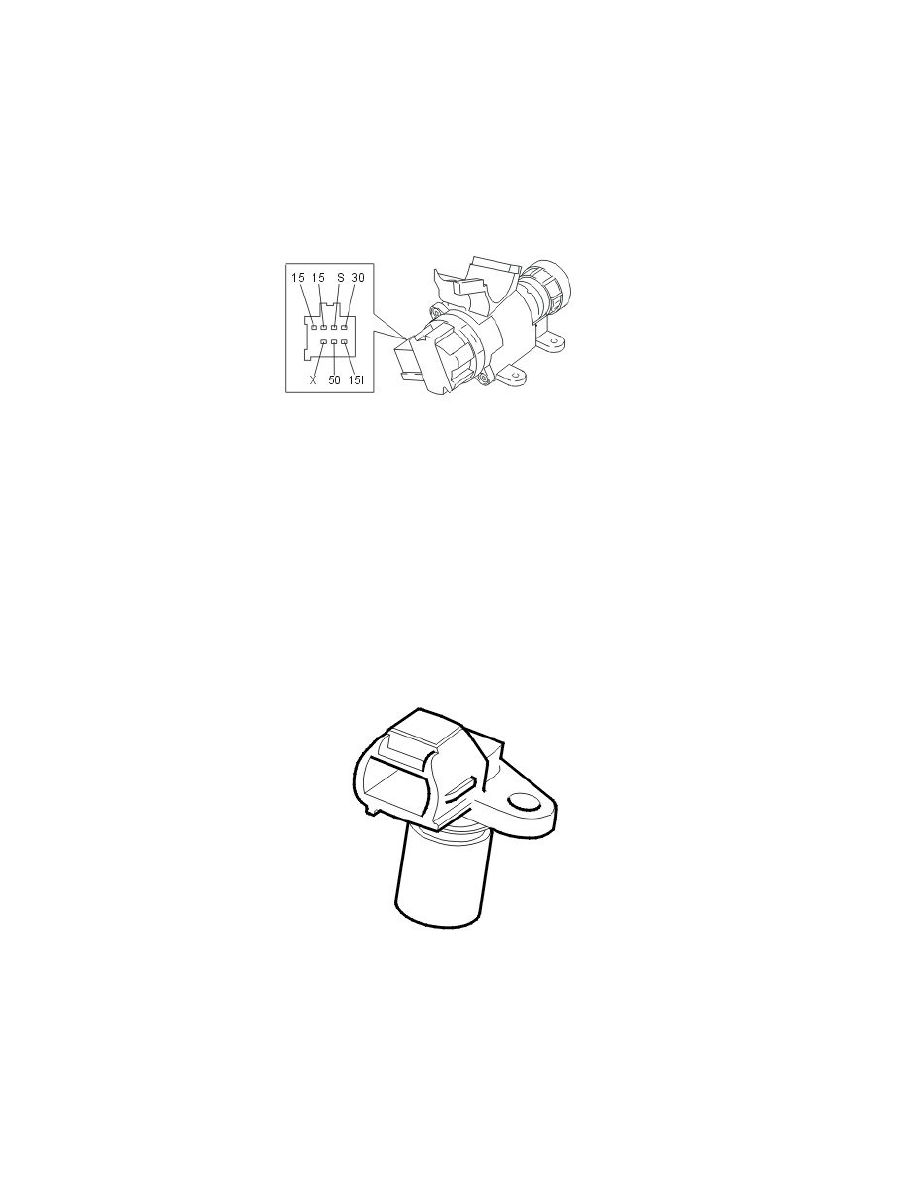XC90 AWD V8-4.4L VIN 85 B8444S (2005)

Engine Control Module: Description and Operation
Design
Part 1
Design
Ignition switch
The Engine Control Module (ECM) uses the signal from the ignition switch to detect when the ignition key has been turned to position II or III. When
the key is in the ignition position (position II) or starting position (position III) a high signal (Ubat) is transmitted from the ignition switch to the engine
control module (ECM). The engine management system prepares for start-up (for example, temporarily activates the fuel pump (FP) relay). When the
flywheel in the engine rotates, the engine speed (RPM) sensor signal is used to keep the fuel pump (FP) relay activated.
The fuse in the fuse box in the passenger compartment supplies current to the ignition switch.
The central electronic module (CEM) has diagnostics for the ignition switch.
Immobilizer
See Design and Function, Immobilizer.
Engine speed (RPM) sensor
The engine speed (RPM) sensor provides the engine control module (ECM) with information about the speed and position of the crankshaft. The engine
control module (ECM) is able to use the signal from the engine speed (RPM) sensor to determine when a piston is approaching top dead center (TDC).
The signal from the engine speed (RPM) sensor is also used to check the engine for misfires. For further information, see: Misfire diagnostic See:
Powertrain Management/Computers and Control Systems/Description and Operation/Misfire Diagnostics
The engine speed (RPM) sensor is at the rear of the engine above the flywheel.
The sensor is inductive with a permanent magnet. An alternating current is induced in the sensor when the flywheel/carrier plate passes the engine speed
(RPM) sensor. The generated voltage and frequency increases with the engine speed (rpm).
The signal varies between 0.1-100 V depending on the engine speed (RPM).
The Engine Control Module (ECM) is able to determine the engine speed (RPM) by counting the number of holes per time unit. When the reference
position passes the engine speed (RPM) sensor, the voltage and frequency drop momentarily to zero, even though the engine is still running. This allows
the engine control module (ECM) to determine the position of the crankshaft.
